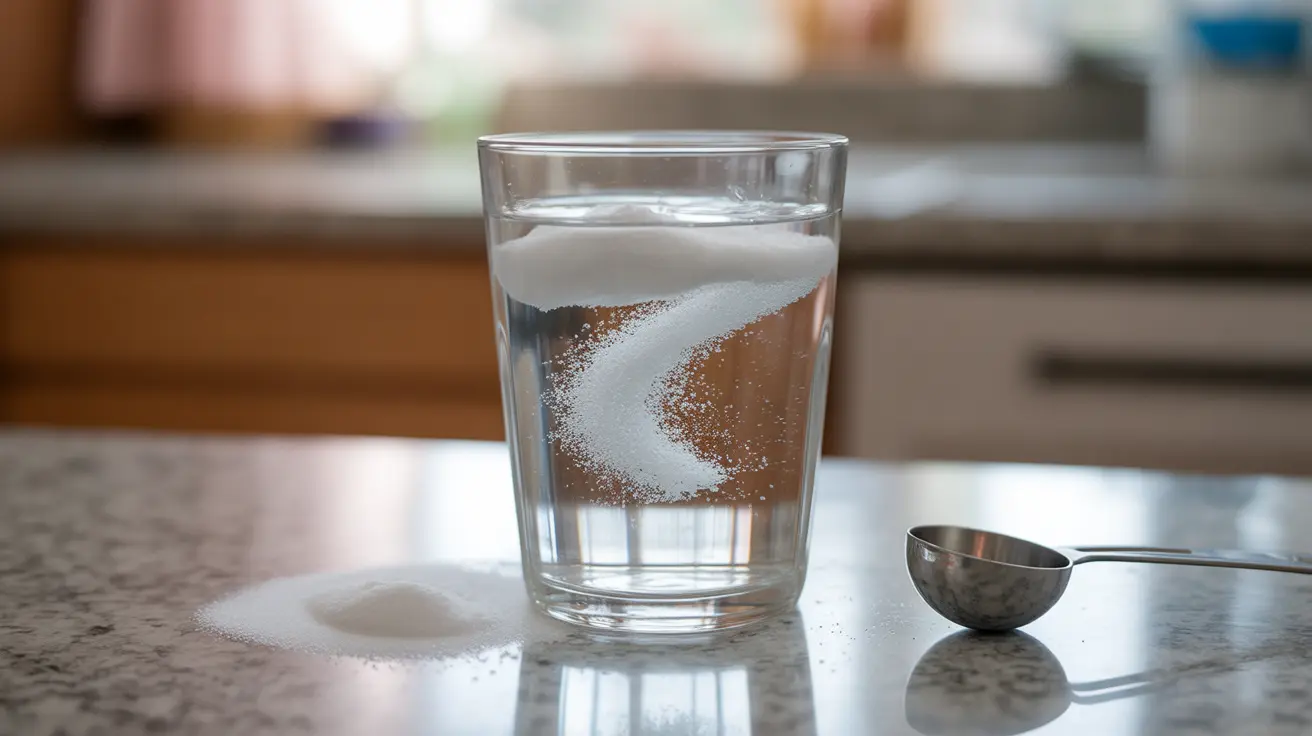The practice of mixing baking soda and salt in water has gained attention as a potential home remedy for various health concerns. While some people claim this mixture offers benefits ranging from improved digestion to enhanced exercise performance, it's crucial to understand both the potential advantages and risks before trying this combination.
In this comprehensive guide, we'll explore the science behind this mixture, examine its purported benefits, and discuss important safety considerations to help you make an informed decision about its use.
Understanding the Basic Chemistry
Baking soda (sodium bicarbonate) and salt (sodium chloride) both play distinct roles when dissolved in water. Baking soda is alkaline and can help neutralize acid, while salt helps maintain proper electrolyte balance in the body. When combined, these substances create a solution that affects the body's pH levels and mineral balance.
Potential Benefits of the Mixture
Digestive Support
Some people use this combination to address digestive issues like acid reflux and indigestion. The alkaline nature of baking soda can help neutralize excess stomach acid, while salt may support proper hydration and mineral balance.
Athletic Performance
Athletes sometimes use this mixture before intense workouts, as sodium bicarbonate may help buffer lactic acid buildup in muscles. However, this practice should only be undertaken under professional guidance.
Electrolyte Balance
The combination can help replenish electrolytes, particularly during periods of intense exercise or illness. However, commercial sports drinks are typically a safer and more balanced option.
Safety Considerations and Proper Usage
The safe consumption of baking soda and salt water requires careful attention to proper measurements and timing. Experts generally recommend no more than 1/2 teaspoon of baking soda and a pinch of salt in 8 ounces of water, and this should not be consumed more than occasionally.
Proper Mixing Instructions
- Use room temperature water
- Dissolve ingredients completely before drinking
- Never exceed recommended amounts
- Don't consume on a full stomach
- Wait at least 2 hours between doses
Health Risks and Warnings
Regular consumption of baking soda and salt water can pose significant health risks, including:
- High blood pressure from excess sodium
- Electrolyte imbalances
- Stomach rupture if consumed with food
- Alkalosis (blood becoming too alkaline)
- Kidney problems
- Interference with certain medications
Frequently Asked Questions
What are the health benefits of drinking baking soda and salt in water?
The mixture may help neutralize stomach acid, support electrolyte balance, and potentially enhance exercise performance by buffering lactic acid. However, these benefits are not extensively studied, and results can vary significantly between individuals.
Is it safe to drink baking soda and salt water regularly for indigestion or exercise performance?
Regular consumption is not recommended. While occasional use might help with specific symptoms, frequent use can lead to serious health complications. It's better to seek professional medical advice for chronic indigestion or athletic performance concerns.
What are the risks and side effects of consuming baking soda with salt in water?
Common side effects include nausea, bloating, increased blood pressure, electrolyte imbalances, and stomach problems. In severe cases, it can lead to metabolic alkalosis, kidney issues, and dangerous interactions with medications.
How much baking soda and salt in water is safe to consume without causing health problems?
If using this mixture, limit consumption to 1/2 teaspoon of baking soda and a small pinch of salt in 8 ounces of water, no more than once per day. However, consult with a healthcare provider before starting any new supplement routine.
Who should avoid drinking baking soda and salt water, such as children, pregnant people, or those with medical conditions?
This mixture should be avoided by children under 5, pregnant or nursing women, people with heart conditions, kidney problems, high blood pressure, or those taking certain medications. Anyone with chronic health conditions should consult their healthcare provider before use.




